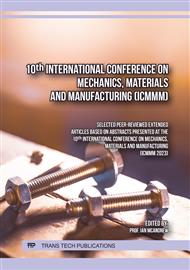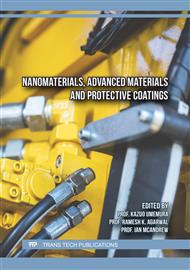p.49
p.55
p.63
p.69
p.75
p.83
p.89
p.95
p.101
Electrochemical Metallization for Enhancing the Quality and Performance of Electric Motor
Abstract:
The present research aimed to evaluate the effect of nickel-based electrochemical metallization (EMNi) on the quality and performance of electric motor components, compared to high-velocity oxy-fuel (HVOF) thermal spray coating, the most widely used coating in the mining industry. The experiment was conducted using motor components comprised of 4340 VCN steel, 4140 VCL steel, 1045 steel, and stainless steel, which underwent both treatments. The surface temperature of the components was monitored during the processing stage, followed by evaluations of their Rockwell hardness (HRC) and surface characteristics (taper, ovality, parallelism, finish, wear) at the onset (day 0) and after 2 years of use the results indicate that EMNi delivers electric motor components with superior finishes and extended warranty and service life in comparison to HVOF.
Info:
Periodical:
Pages:
75-80
Citation:
Online since:
March 2024
Price:
Сopyright:
© 2024 Trans Tech Publications Ltd. All Rights Reserved
Share:
Citation:



